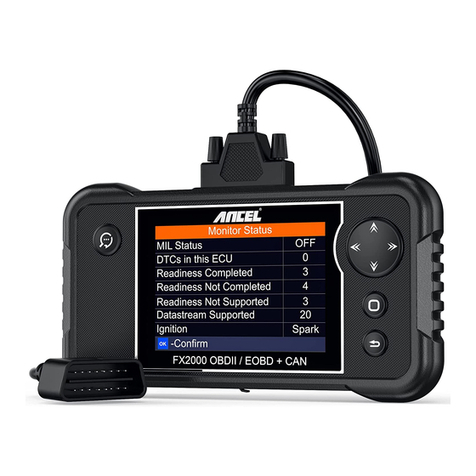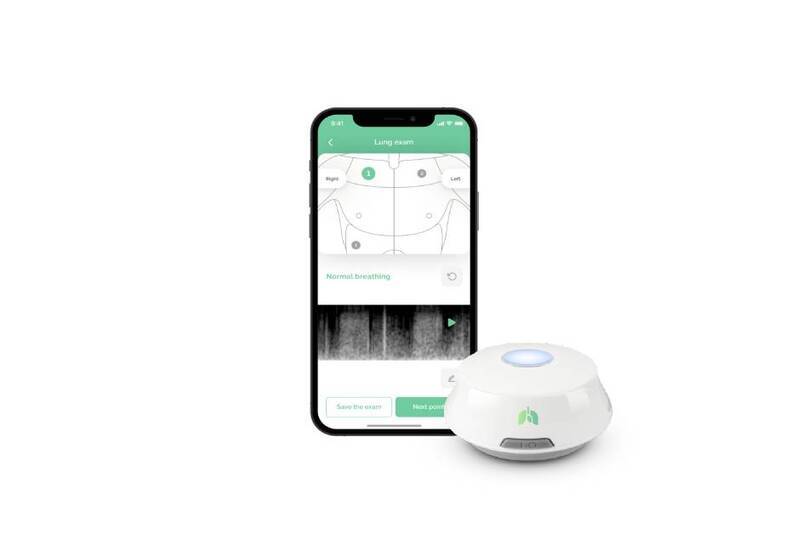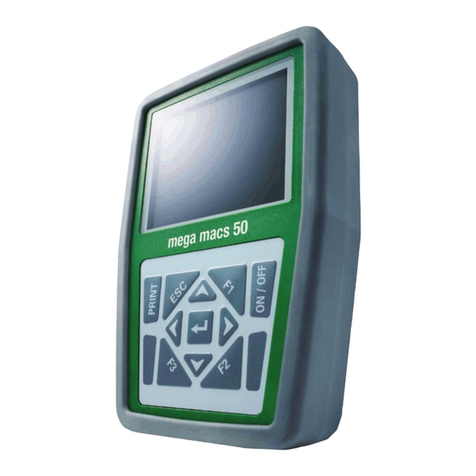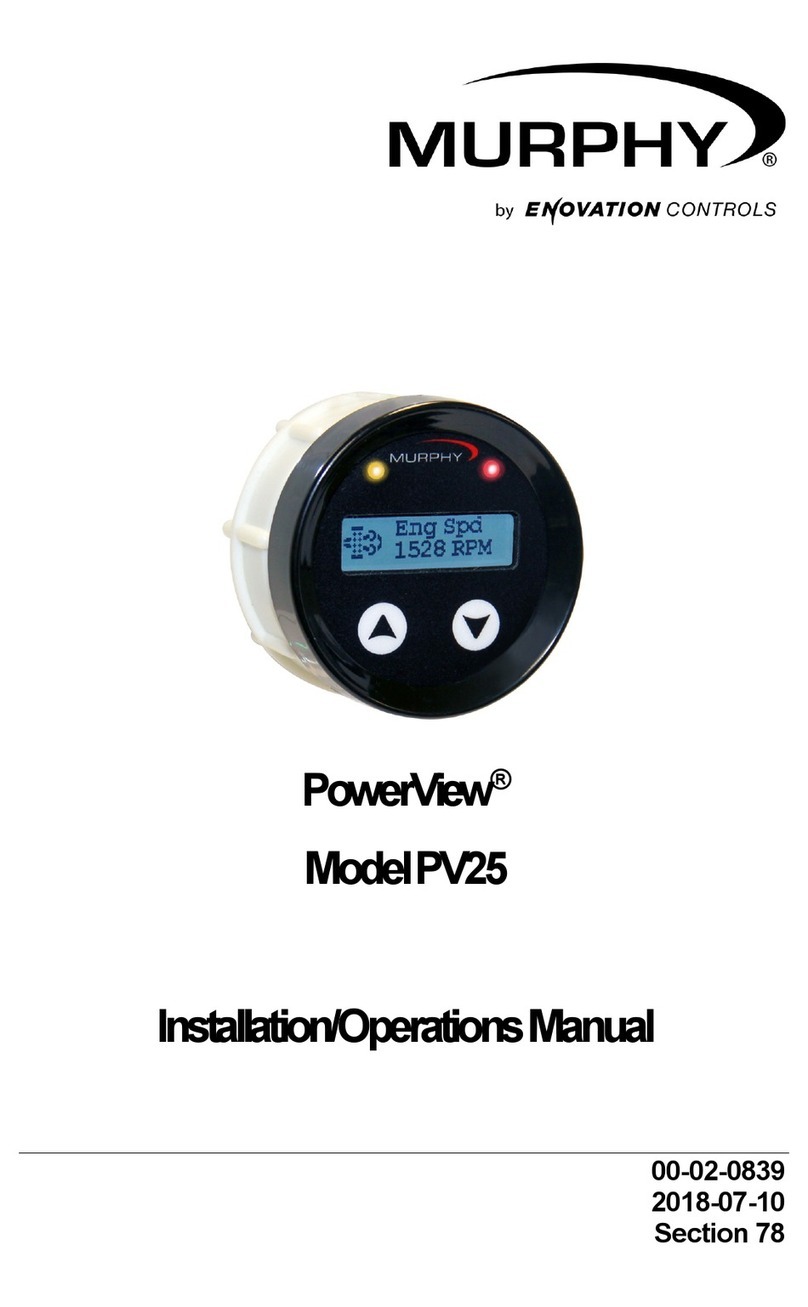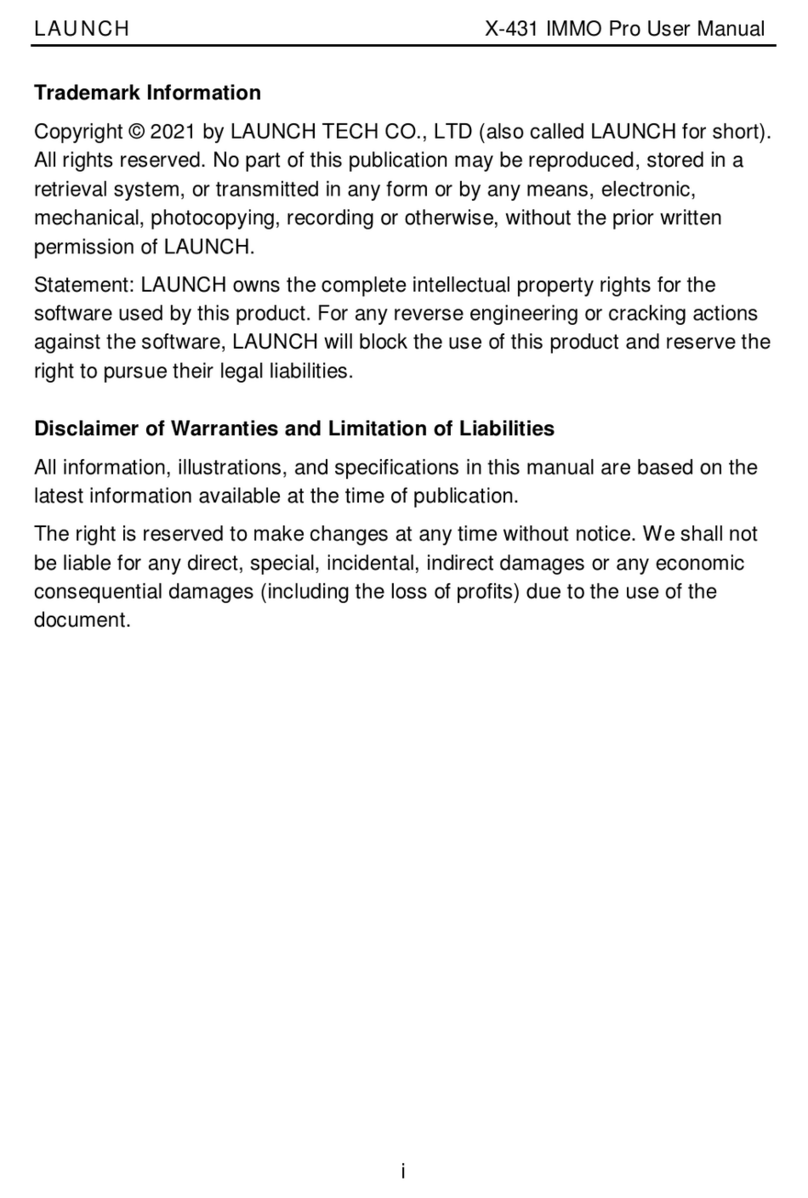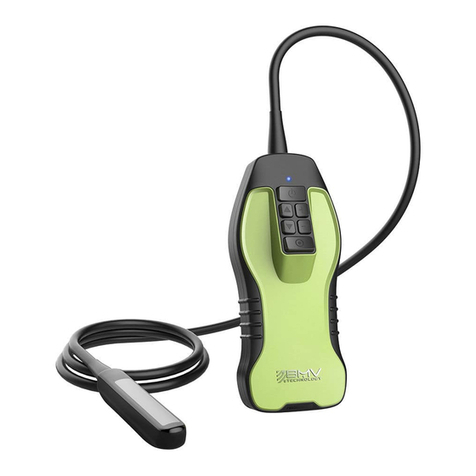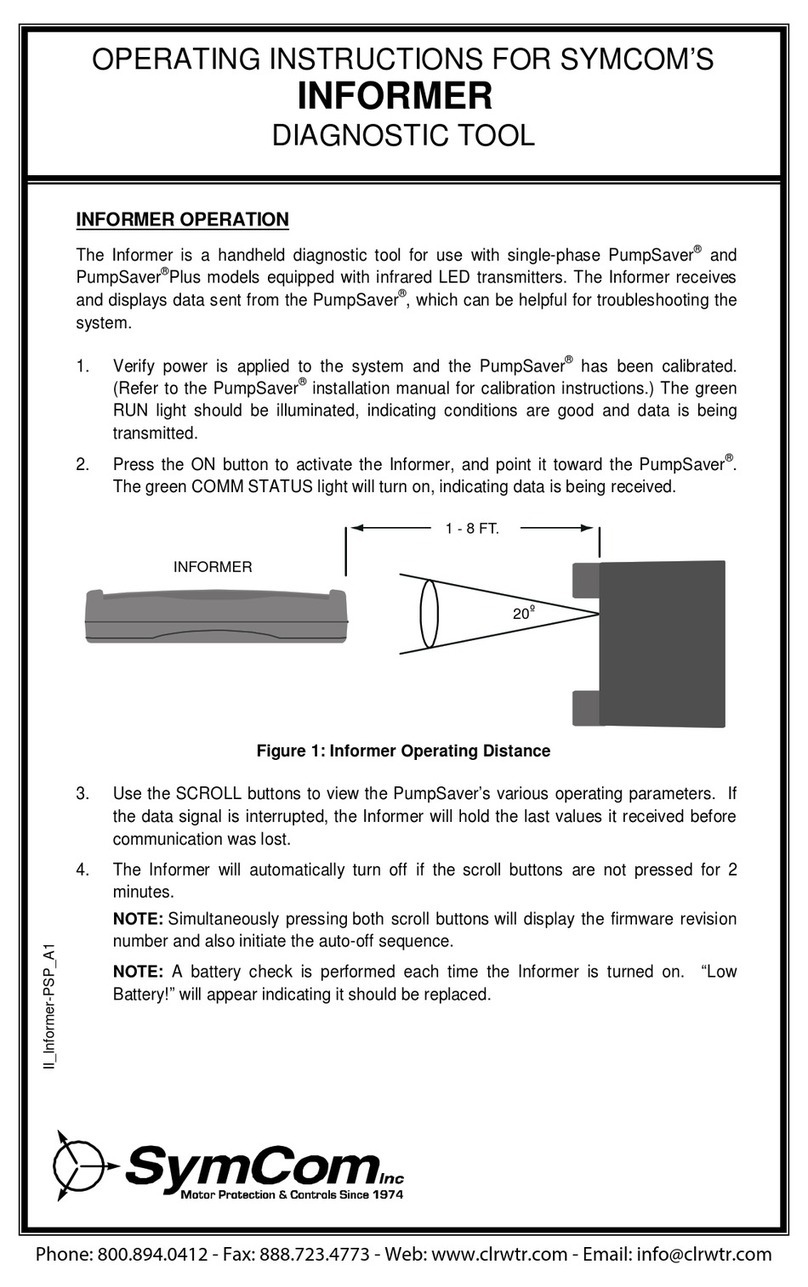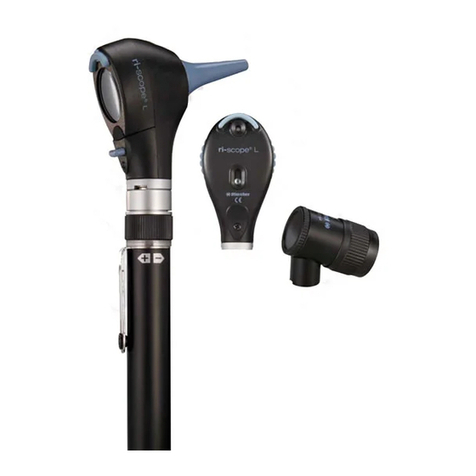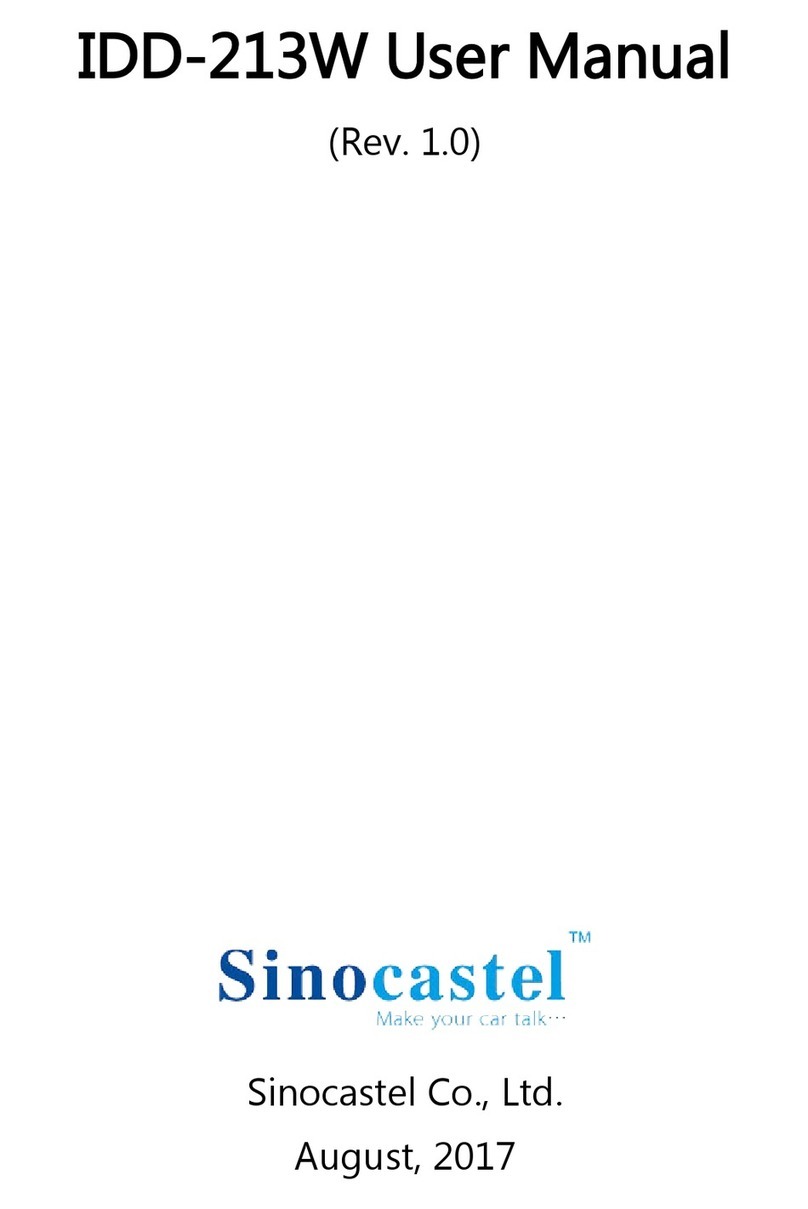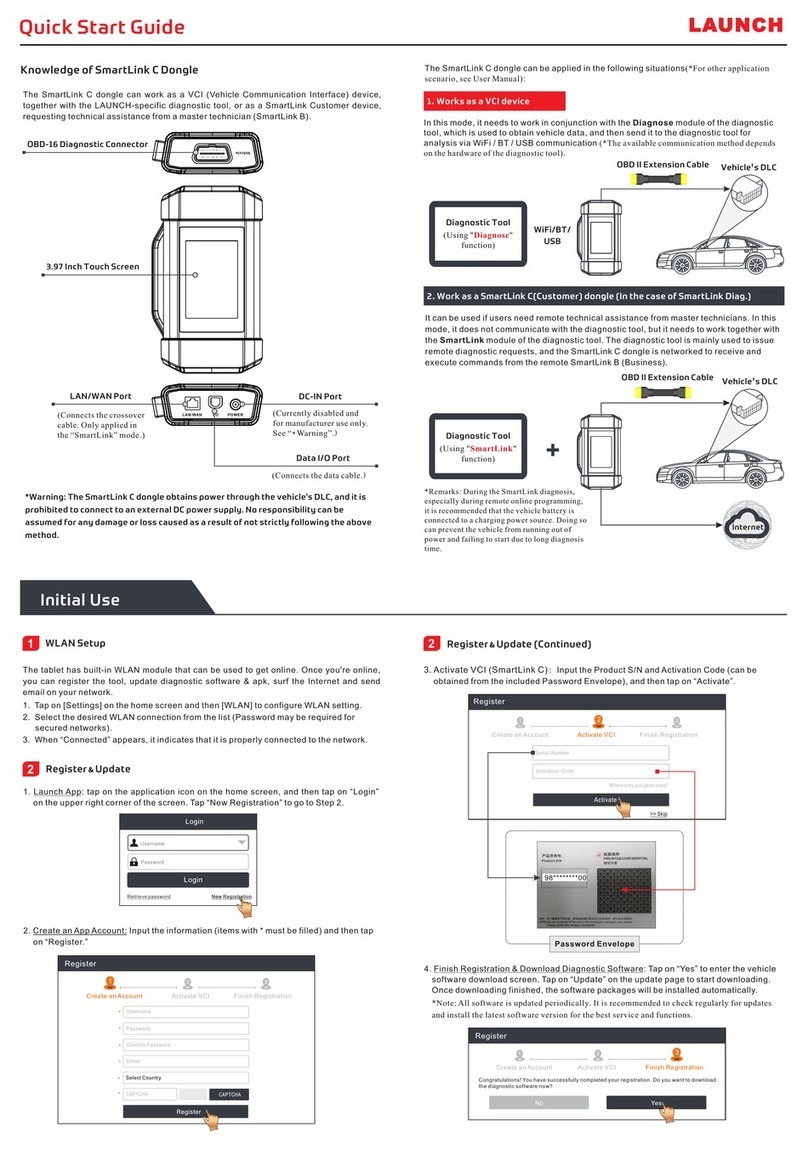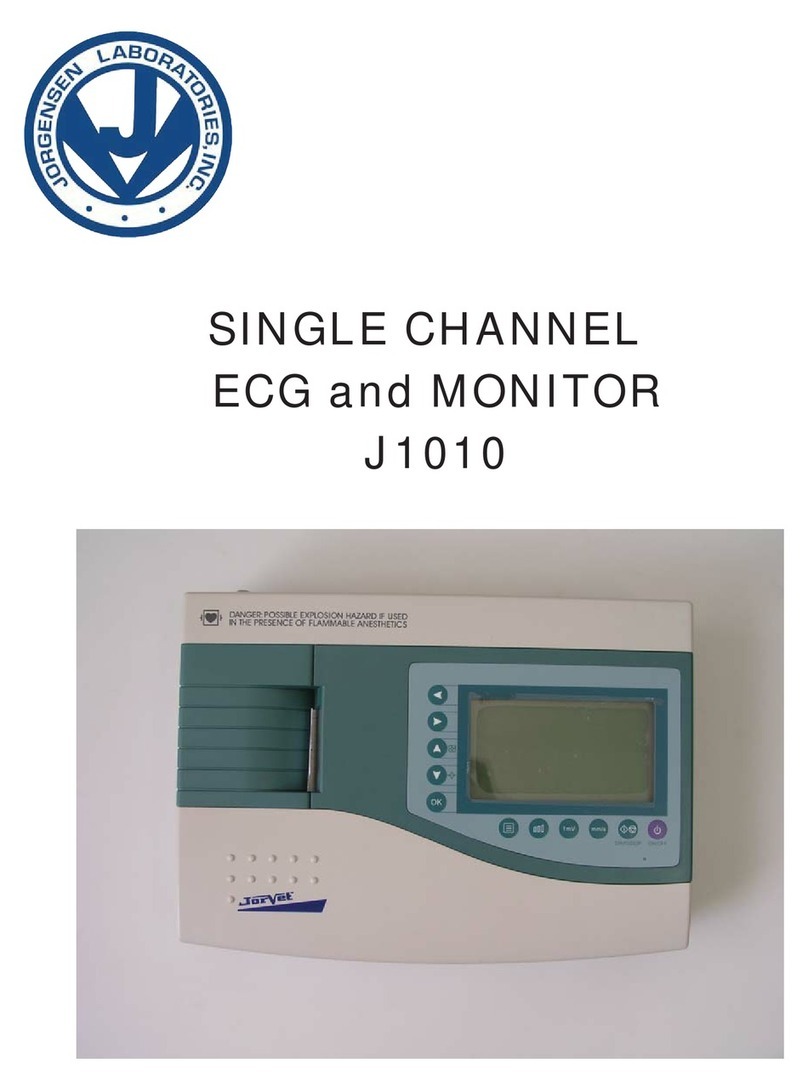Mitel SST2 User manual

Site Survey Tool SST2 for DECT
USER GUIDE

33/1531-ANF 901 43 Uen C 2017-03-28
User Guide
Site Survey Tool for DECT
2
NOTICE
The information contained in this document is believed to be accurate in all respects but is
not warranted by Mitel Networks™ Corporation (MITEL®). Mitel makes no warranty of any
kind with regards to this material, including, but not limited to, the implied warranties of
merchantability and fitness for a particular purpose. The information is subject to change
without notice and should not be construed in any way as a commitment by Mitel or any of
its affiliates or subsidiaries. Mitel and its affiliates and subsidiaries assume no responsibility
for any errors or omissions in this document. Revisions of this document or new editions of
it may be issued to incorporate such changes.
No part of this document can be reproduced or transmitted in any form or by any means -
electronic or mechanical - for any purpose without written permission from Mitel Networks
Corporation.
TRADEMARKS
The trademarks, service marks, logos and graphics (collectively "Trademarks") appearing
on Mitel's Internet sites or in its publications are registered and unregistered trademarks of
Mitel Networks Corporation (MNC) or its subsidiaries (collectively "Mitel") or others. Use of
the Trademarks is prohibited without the express consent from Mitel. Please contact our
Mitel Networks Corporation registered trademarks, please refer to the website: http://
www.mitel.com/trademarks
© Copyright 2017, Mitel Networks Corporation
All rights reserved

33/1531-ANF 901 43 Uen C 2017-03-28
User Guide
Site Survey Tool for DECT
3
1 INTRODUCTION
1.1 ABOUT THE SITE SURVEY TOOL
The Site Survey Tool is used by technicians to plan base station locations for a DECT
telephone system with TDM-DECT or IPBS base stations. With the Site Survey Tool
you can determine the required number and positions of base stations.
By using the Site Survey Tool and one or two base stations, the radio coverage of a
base station can be determined. Two base stations are required when IPBS base
stations are used and if air sync is considered.
A connection with a PBX is not required when using the Site Survey Tool. The Site
Survey Tool is available in two versions. One with battery units and chargers. And one
without battery units and chargers.
1.2 COMPONENTS OF THE SITE SURVEY TOOL WITH
BATTERY UNITS AND CHARGERS
Figure 1. Site Survey Tool: case and components
The Site Survey Tool consists of:
• Two carrying sets (1)
• Two battery unit chargers (2)
• Two 5m battery patch cables (3)
• Two battery units (4)
• Interchangeable plug attachments (EU, UK, AU+US) (5)
• User Guide
• Carrying case
1
2
5
4
3
001

33/1531-ANF 901 43 Uen C 2017-03-28
User Guide
Site Survey Tool for DECT
4
1.3 COMPONENTS OF THE SITE SURVEY TOOL WITHOUT
BATTERY UNITS AND CHARGERS
SST2 is aimed for site survey measurements for IP DECT with MiVoice MX-ONE,
MiVoice Business, MiVoce 250, and for Integrated DECT with MiVoice MX-ONE.
The Site Survey Tool consists of:
• Two carrying sets
• Two 5m battery patch cables
• Two 0,5 m cable with DC plug
• User Guide
• Carrying case
1.4 TECHNICAL DATA WITH BATTERY UNITS AND
CHARGERS
1.5 TECHNICAL DATA WITHOUT BATTERY UNITS AND
CHARGERS
1.6 RESTRICTIONS
The Site Survey Tool does not conform to intrinsic safety specifications. Never use the
tool in potentially explosive environments.
The Site Survey Tool is intended for indoor use only. Outdoor use may damage the
tool.
IMPORTANT: When a 5 m battery patch cable is connected to the base station, the
base station must not be connected to ethernet.
Battery operating time 8 hours
Battery charging time 12 hours (approx.)
Battery life cycle Charge/discharge count = 1000
(min.)
Supported base stations IPBS4x2/IPBS2
Supported base stations IPBS4x2/IPBS2

33/1531-ANF 901 43 Uen C 2017-03-28
User Guide
Site Survey Tool for DECT
5
1.7 SPECIFICATIONS
1.8 USE OF HANDSETS
This user´s guide assumes that you are familiar with the use of handsets. If necessary,
see the handset user´s guide.
Operating temperature 0 - 40oC
Storage temperature -20 - +70oC
Relative humidity 10 to 80%, non-condensing

33/1531-ANF 901 43 Uen C 2017-03-28
User Guide
Site Survey Tool for DECT
6
2 PREPARATIONS FOR USE
2.1 CHARGING THE BATTERY (ONLY FOR VERSION WITH
BATTERY UNITS AND CHARGERS)
Charge the battery units with the supplied chargers for approximately 12 hours.
A fully charged battery offers about 8 hours of operation. When the battery voltage
becomes too low, the site survey base station stops operating,
The battery unit and the site survey base station are connected with the included
battery patch cable.
The battery charger is supplied with a number of interchangeable plug attachments for
different countries. The correct plug attachment for the intended country of use must be
fitted as follows:
1 If necessary, remove the Central European plug attachment.
2 Select the correct plug attachment for the intended country of use.
3 Slide the plug attachment onto the charger. Check that the connection is correct
and secure.
2.2 CONNECTIONS TO EXTERNAL POWER SUPPLY (ONLY
FOR VERSION WITHOUT BATTERY UNITS AND
CHARGERS)
Use the DC plug cable and connect the red and black cables to a suitable DC power
source.
2.3 MOUNTING THE SITE SURVEY BASE STATION
The mechanical assembly protects the base station against mechanical shocks and
enables it to be placed in the following ways:
• Hanging, for instance on a door using the carrying sets
• Mounted on a pole with the mounting clip delivered with the base station
• Use the carrying sets fastened to a tripod
NOTE: The battery unit must be placed on a flat surface. Do not hang the battery unit in
the patch cable.
Operating voltage: 21 to 56 Vdc
Power consumption: 4W

33/1531-ANF 901 43 Uen C 2017-03-28
User Guide
Site Survey Tool for DECT
7
3 THE SITE SURVEY TOOL IN THE HANDSET
The Site Survey Tool in the handset provides two major features; indications of radio
signal quality and base station listing.
Radio signal quality involves both signal strength and frame error rate. This tool may be
used when planning a site's radio coverage and to find radio quality problems.
Base stations lists may include all base stations within range of the phone, sorted in
signal strength order. This feature may be used to find other interfering DECT base
stations.
3.1 ACCESS TO THE MENU
There is a direct access to the Site survey tool menu by entering the code *#77# in idle
mode. See figure 2 and figure 3.2 on page 7.
The Site survey tool menu can also be permanently available in the menu by following
the steps below.
Mitel 5614, DT69x/DT4x3 and 5604/5607 DECT Telephones
1 Press the soft key "Menu" and select Calls > Call time.
2 Press the keys ">*<<*<" An Admin menu will appear.
3 Select "Site survey tool.
The Site survey tool menu is now permanently available, it is found pressing the soft
key "Menu", and selecting Calls > Admin menu > Site survey tool.
NOTE: The Admin menu is available until the handset is restarted.
Figure 2. Site survey tool menu items in Mitel 5614, DT69x/DT4x3 and 5604/
5607
3.2 ACTIVATE INFORMATION DISPLAY
Mitel 5614, DT69x/DT4x3 and 5604/5607 DECT Telephones
The first item in the Site survey tool menu is Link that shows information described
below.
Select Back
Site survey tool
003
Link
HO & roam beep
Range beep
Error rate beep
Set rate (-dBm)
Set error rate (f/s)
Show RFPs

33/1531-ANF 901 43 Uen C 2017-03-28
User Guide
Site Survey Tool for DECT
8
NOTE: If the Admin menu is enabled, it is also possible to view link information during a
call by pressing the soft key "More" and then selecting "DECT Info"> "Link".
Figure 3. Information display in Mitel 5614, DT69x/DT4x3 and 5604/5607
First row
Shows the current carrier (C), slot (S) and signal strength (SS).
Second row
Shows the amounts of bad frames per second which are received by the handset.
Third row
Shows during an active call the amount of bad frames per second that are received by
the base station.
Fourth row
Shows the PARI that uniquely identifies the base station that the handset is
synchronized to.
Fifth row
C-plane - shows the current speed rate that is used for transmitting data. Slow rate is
indicated by CS, and fast rate is indicated by CF.
Pwr - shows the output power transmitted by the handset.
LP: , US: , EU: .
Sixth row
Encypt - shows if the established call is encrypted (On) or not (Off). If an hyphen is
displayed (-), no call is established.
Cap - shows if the base station(s) has the capability to encrypt calls. If the status is
"On", encryption is possible. Otherwise, "Off" is displayed.
3.3 ACTIVATE HAND-OVER AND ROAM BEEP
The handset can be set to indicate base station switches. The different hand-overs and
roaming are indicated according to the table.
Base station switch type Beep signal type Comment
Roaming Tow low-pitch beeps Handset is idle
Inter cell hand-over One high-pitch beep Played as in-band tone
Intra cell hand-over One low-pitch beep Played as in-band tone
Back
Link
005
C3 S5 SS -60 dBm
Error rate: 2 f/s
Q2 Error rate: 1 f/s
PARI: 9004043D02
C-Plane: - Pwr: -
Encryp: - Cap: On

33/1531-ANF 901 43 Uen C 2017-03-28
User Guide
Site Survey Tool for DECT
9
Mitel 5614, DT69x/DT4x3 and 5604/5607 DECT Telephones
Activate hand-over and roam beep by selecting "HO & roam beep" in the site survey
tool menu, and then select "On". Select "Off" to deactivate the hand-over and roam
beep.
3.4 ACTIVATE SIGNAL STRENGTH RANGE BEEP AND SET
RANGE LEVEL
The handset can be set to indicate when the signal strength to any base station drops
below a certain level. When the signal strength drops below the level, a special beep
signal and the red status LED is activated.
Mitel 5614, DT69x/DT4x3 and 5604/5607 DECT Telephones
1 Select "Set range".
2 Set range level (-68 dBm).
3 Press "Save".
4 Select "Range beep".
5 Select "On" to activate the range beep.
3.5 ACTIVATE FRAME ERROR RATE BEEP
The amount of bad frames per second may also trigger a beep signal (signal is
identical to the range beep). A frame is considered bad if no sync word is found, or if
the A-field CRC is incorrect. There are a total of 100 frames per second, and when the
amount of bad frames exceeds the preset value for one second or more, a special
beep signal and the red status LED is activated.
Mitel 5614, DT69x/DT4x3 and 5604/5607 DECT Telephones
1 Select "Set error rate (f/s)".
2 Set error rate level (2 f/s).
3 Press "Save".
4 Select "Error rate beep".
5 Select "On" to activate the error rate beep.
3.6 BASE STATION LISTING
The sub menu shows RFPs for Mitel 5614, DT69x/DT4x3 and 5604/5607 (see figure 4
on page 10) give possibilities to scan the air for base stations and sort them in order of
signal strength - strongest first.
Four different lists are available. The first list is All / All RFPs which will display all
DECT base stations found. With the Selected / Selected RFPs list, a special system
may be selected, just enter the PARK for that system. In the same way a special
External hand-over Two low-pitch beeps Played as in-band tone
Base station switch type Beep signal type Comment

33/1531-ANF 901 43 Uen C 2017-03-28
User Guide
Site Survey Tool for DECT
10
system may be excluded with Hide selected / All except selected. The Residential /
Residential RFPs list will contain residential base stations only.
Each list may contain up to 64 base stations. The number of base station hits may vary
by time, thus several scan cycles may be needed to find all base stations.
Figure 4. Base station listing menu in Mitel 5614, DT69x/DT4x3 and 5604/5607
In Mitel 5614, DT69x/DT4x3 and 5604/5607; press the soft key "Select" for making a
list over all RFPs. Scroll the list with the Navigation key. From the left; a counter, signal
strength, and RFPI are displayed (see figure 5).
Figure 5. A base station list for all RFPs in Mitel 5614, DT69x/DT4x3 and 5604/
5607
Show RFPs
007
All RFPs
Selected RFPs
All except selected
Residential RFPs
Select Back
All RFPs
009
Stop Back
Nr dBm RFPI
01 -58 9004025E07
02 -58 9004085A05
03 -60 9004085A02
04 -62 1000805001

33/1531-ANF 901 43 Uen C 2017-03-28
User Guide
Site Survey Tool for DECT
11
4 SITE SURVEY WITH IPBS BASE STATION
NOTE: If the Enhanced DECT Security feature is to be used in the system (to gain
early encryption and re-keying) then the Enhanced DECT Security feature must be
activated before performing the site survey. For information on Enhanced DECT
Security, see about Enhanced DECT Security in the System Description
documentation for IP-DECT. For information on how to activate Enhanced DECT
Security, see the Installation and Operation Manual for IP-DECT.
If the planned system shall have an IPBS, both speech coverage and sync coverage
have to be considered. If the system only consists of IPBL, only speech coverage has
to be considered.
Speech coverage: the radius of the circle (circular radiation patterns of the IPBS
antennas are assumed for reasons of simplicity), around a particular IPBS, in which
portable parts can communicate with that IPBS, see figure 6.
Sync coverage: the radius of the circle, around a particular IPBS, in which other IPBSs
can synchronize with that IPBS with a given synchronization loss probability. This
means that the size of the sync radius depends on requested probability of losing
synchronization, see figure 6.
Figure 6. Air- and speech sync radius.
4.1 START BY PLACING TWO BASE STATIONS IN THE SITE
Use the GUI web interface to configure IPBSs. For more information about the GUI
web interface, see the document Installation and Operation Manual for IP-DECT Base
Station.
1 Configure IPBSs as Master and Pari Master inclusive PARI and SARI.
2 Select DECT > Radio.
010
Air Sync Coverage
Speech Coverage

33/1531-ANF 901 43 Uen C 2017-03-28
User Guide
Site Survey Tool for DECT
12
3 In the PARI Master IP Address text field, enter loopback address 127.0.0.1.
4 If the base station shall be used without a network and a DHCP server, a static
IP address must be set. Do as follows:
Select LAN > DHCP. In the Mode drop-down list, set the DHCP mode to
"disabled".
Select LAN > IP. In the IP Address text field, enter an IP address, e.g.
192.168.0.1
5 Set base station A in deployment mode.
6 Set base station A as Sync master
7 Register one DECT handset in Base station A
8 Configure base station B as base station A using the same system ID, PARI and
SARI. Note: It is recommended to use different IP addresses
9 Set base station B in deployment mode.
10 Set base station B as Sync Slave.
11 Base station A shall be placed the first time on the planned location for the Sync
Master (should be in the middle of the site).
4.2 CHECK THE SPEECH COVERAGE FOR BASE STATION A
12 Check on the DECT handset that the signal strength is > -68 dBm which is the
normal case to get sufficient speech quality within each base station.
13 Verify that the speech quality is sufficient by listening on a call. When the off-
hook key is pressed, the speech is looped back. However, when the off-hook key
is pressed on an anonymous DECT handset a dial tone is heard and when a
digit is pressed the speech is looped back.
In certain environments, for example reflective environments (large rooms with
lots of metal), there might be a need for a considerable stronger signal strength
more than -68 dBm in order to get sufficient speech quality.
14 Mark on a map the position and the speech coverage for base station A.
4.3 CHECK THE SYNCHRONIZATION COVERAGE
15 Use the GUI web interface on base station B and check that the signal strength
from base station A to base station B is stronger than -83 dBm. If this is not the
case then you should consider to move base station B closer to base station A to
get a stable synchronization coverage for a longer time.
For IPBS4x2/IPBS2: You can also check the synchronization by looking at the
LED on the base station IPBS4x2/IPBS2, see figure 7 on page 13. For a
description of LED deployment indications, see the diagram in figure 8 on page
13. When indicating no sync (LED flashing red and yellow) it might take some
additional time (10 to 30 seconds) to regain synchronization when entering the
sync coverage again.

33/1531-ANF 901 43 Uen C 2017-03-28
User Guide
Site Survey Tool for DECT
13
Figure 7. LED on IPBS4x2/IPBS2
Figure 8. LED deployment indications on IPBS4x2/IPBS2
16 Use the GUI web interface on base station B and check the signal strength on
the actual synchronization coverage and name it X.
17 Perform an RFP scan. If there are other DECT systems that are stronger than
(X-6) dBm, move base station B closer to base station A and then repeat from
step 10 above. For example, if X = -80 dBm then there must be no other DECT
systems that are stronger than -86 dBm.
4.4 TO PERFORM MEASUREMENTS FOR OTHER BASE
STATIONS
18 Move base station A to the position where base station B is located.
19 Place base station B on the next planned position.
20 Repeat from step 7 above.
LED
IPBS2
Deployment:
Good sync mode and has good air sync
The IPBS4x2/IPBS2 is in deploy
coverage.
Deployment:
Bad sync
The IPBS4x2/IPBS2 is in deploy
mode and does not have
adequate air sync coverage.
Deployment:
No sync mode and has no air sync
The IPBS4x2/IPBS2 is in deploy
coverage.
2000 ms blue, 400 ms yellow.
400 ms blue, 600 ms off, 400 ms blue,
600 ms off, 400 ms yellow.
2000 ms red, 400 ms yellow.

33/1531-ANF 901 43 Uen C 2017-03-28
User Guide
Site Survey Tool for DECT
14
5 BROADCAST AND MULTICAST MESSAGING
Special requirements need to be considered when planning a system for broadcast and
multicast messaging.
Broadcast and multicast messages are without any handshake procedure between the
base stations and the handsets instead a number of retransmissions are being made to
increase the probability of a complete transmission. The sending application receives a
confirmation that the message has been sent and received by the radio exchange/base
stations but not the handsets.
Advantage of sending broadcast/multicast messages:
• Quick transmission to a large number of users
• Low system capacity usage
Disadvantage of sending broadcast/multicast messages:
• No individual technical confirmation, thus lower security
An appropriate value for installations where broadcast and multicast shall be used is to
always have field strength above -65dBm.
Table of contents

